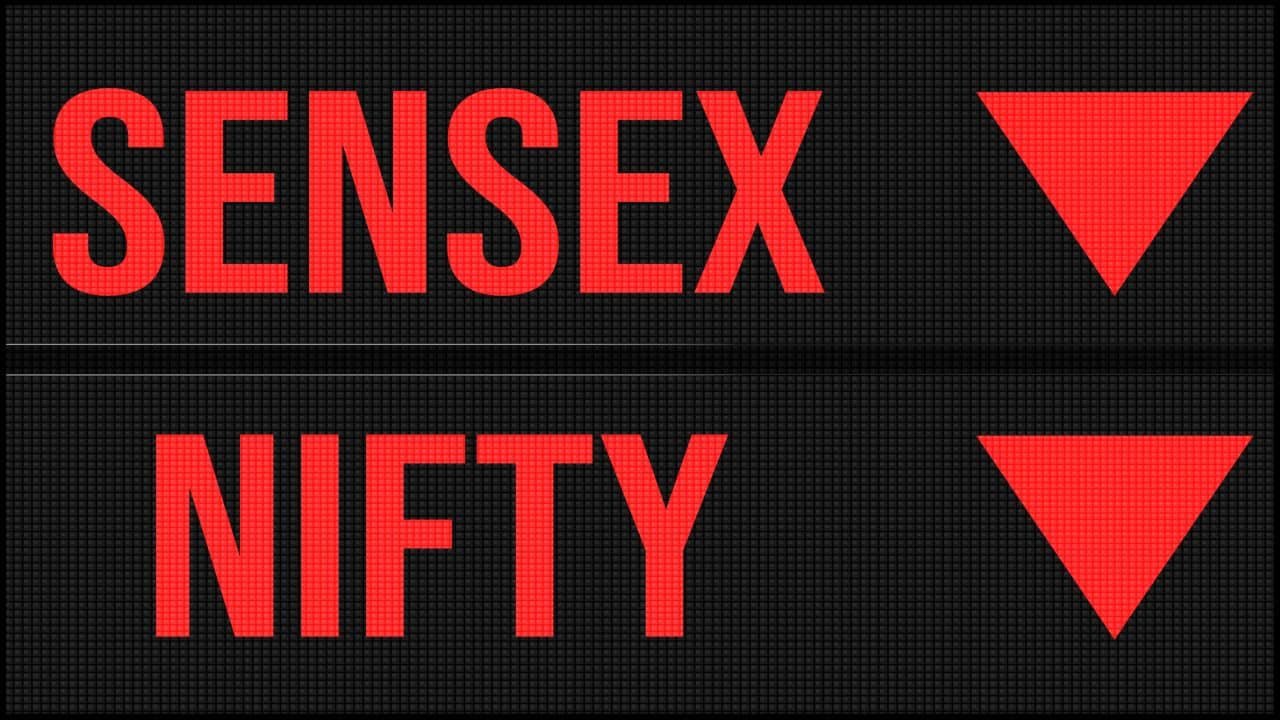Now Reading: Top three stocks to buy today—recommended by Ankush Bajaj for 11 July
-
01
Top three stocks to buy today—recommended by Ankush Bajaj for 11 July
Top three stocks to buy today—recommended by Ankush Bajaj for 11 July

Top 3 Stocks Recommended by Ankush Bajaj
Buy: Glenmark Pharma — Current Price: ₹1904.00
Why It’s recommended: Glenmark has made a fresh lifetime high, signaling strong bullish sentiment and strength in price action. On the lower timeframes, the stock is consistently trading above key moving averages, reinforcing the prevailing uptrend. It has shown resilience amid recent market volatility and is establishing a long-term bullish trend that may extend further. The structure remains technically sound, supported by strong price action and moving average alignment, indicating potential for continued upside toward higher levels.
Key metrics: Breakout zone: Fresh lifetime high breakout
Support (stop loss): ₹1855
Pattern: Lifetime high breakout with moving average alignment
RSI: Not overbought; showing steady strength on both intraday and daily charts
Technical analysis: The stock has entered uncharted territory by registering a new all- time high, confirming a strong continuation breakout. The price action is decisive and backed by healthy volumes, with a steady climb above previous consolidation levels. On the lower timeframe charts, Glenmark is holding well above both short-term and medium-term moving averages, signaling sustained bullish demand. The trend shows little sign of exhaustion at this stage, with the next upside zone seen around ₹1975– ₹1980 as the breakout matures.
Risk factors: A close below ₹1855 would invalidate the bullish breakout setup and suggest weakening short-term momentum. Traders should stay alert for any broad market corrections or if the stock fails to hold above ₹1880 in the near term.
Buy at: ₹1904.00
Target price: ₹1975– ₹1980
Stop loss: ₹1855.00
Buy: HDFC AMC — Current Price: ₹5207.00
Why it’s recommended: HDFC AMC is exhibiting strong momentum as reflected by the daily RSI reading above 63, which indicates sustained buying interest without being overbought. The stock has also formed a symmetrical triangle pattern on the daily chart, a classic continuation pattern suggesting that the recent consolidation is likely to resolve higher. The structure is bullish and favors a potential breakout toward the ₹5270– ₹5280 zone in the near term.
Key metrics: Breakout zone: Triangle pattern breakout on the daily chart
Support (stop loss): ₹5170
Pattern: Symmetrical triangle continuation
RSI: Above 63 — strong bullish momentum
Technical analysis: HDFC AMC has been consolidating within a well-defined triangle pattern and is now showing signs of an upward breakout. The price action is supported by rising RSI and strong positioning above short-term moving averages, indicating sustained institutional interest. With volumes starting to pick up and momentum indicators favoring buyers, the stock looks poised to move toward ₹5270– ₹5280 in the short term.
Risk factors: A close below ₹5170 would negate the bullish breakout setup and may invite short-term weakness. Traders should watch for price stability above ₹5200 to maintain bullish bias.
Buy at: ₹5207.00
Target price: ₹5270– ₹5280
Stop loss: ₹5170.00
Buy: Bajaj Finance — Current Price: ₹947.65
Why it’s recommended: Bajaj Finance is showing a steady recovery with the daily RSI hovering near 60, indicating improving momentum. The stock has formed a triangle pattern on the daily chart, suggesting a base formation after recent correction. Additionally, on the 15-minute timeframe, Bajaj Finance has already given a triangle breakout, further supporting the potential for a short-term surge. These multiple timeframe signals make the setup attractive for a move toward ₹970.
Key metrics: Breakout zone: Triangle breakout on 15-minute chart, daily triangle base
Support (stop loss): ₹935
Pattern: Triangle breakout across daily and intraday charts
RSI: Near 60 — improving momentum
Technical analysis:The stock has been consolidating in a narrowing range and has now broken out on the lower timeframe, confirming near-term strength. The daily chart also reflects a triangle base pattern, which often precedes directional moves. RSI is supportive, and the price has reclaimed short-term moving averages, indicating improved sentiment. The setup targets ₹970 in the short term, with potential for more if volume expansion continues.
Risk factors: A close below ₹935 would invalidate the short-term breakout and suggest weakness in the current structure. Failure to hold above ₹945 intraday may also reduce upside conviction.
Buy at: ₹947.65
Target price: ₹970.00
Stop loss: ₹935.00
Market Wrap – July 11, 2025 (Friday)
The Nifty 50 gave up early gains and settled at 25,355.25, up by 120.85 points or 0.47%, but the move lacked conviction as several key sectors failed to support the momentum. The BSE Sensex ended at 83,190.28, adding 345.80 points or 0.41%, but mostly on the back of select stocks. Bank Nifty managed a modest gain of 257.55 points or 0.45% to close at 56,956.00, yet activity remained range-bound within financials.
On the sectoral front, signs of fatigue were evident. PSU Bank slipped 0.80%, the India. Consumption Index fell 0.67%, and Infrastructure declined 0.63% — all indicating profit- taking in previously active themes. Meanwhile, defensive names tried to offer support, with Realty gaining 0.72% and Metals inching up 0.42%, but failed to lift overall sentiment.
Among individual performers, IndusInd Bank and Maruti Suzuki rose 1.44% each, while Tata Steel climbed 1.04%, reflecting selective institutional interest. However, broader weakness was seen as stocks like Bharti Airtel dropped 2.73%, Asian Paint declined 1.91%, and HDFC Life Insurance also slipped 1.91%, showing selling pressure in defensives and recent gainers alike.
Nifty Technical Analysis
The Nifty ended Thursday’s session on a notably weak note, falling by 120.85 points or 0.47% to close at 25,355.25. This marked a clear break from the recent tight-range activity seen over the past 7–8 sessions. The index not only closed at the lowest point of the day but also decisively moved below key intraday supports, indicating that bears are regaining control. On the daily chart, the range breakdown reflects a loss of short- term momentum, while on the hourly timeframe, Nifty appears to be breaking down from a bearish pennant pattern, with the next visible support zone around the psychological 25,000 mark.
From a broader technical perspective, the index still trades above its key daily moving averages, with the 20-day simple moving average placed at 25,243 and the 40-day exponential moving average at 25,011. This keeps the medium-term trend structure intact. However, on the hourly chart, Nifty is now trading below both the 20-hour SMA (25,457) and the 40-hour EMA (25,443), which highlights increasing short-term weakness and a shift in directional bias toward the downside.
Momentum indicators are showing a clear deterioration across timeframes. On the daily chart, the Relative Strength Index (RSI) has dropped to 55, reflecting weakening bullish momentum, while the MACD has slipped further to 199, with a negative crossover now confirmed below the signal line. The hourly RSI has declined sharply to 33.8, entering oversold territory, while the MACD is deeply negative at –26, also below its signal line, confirming short-term bearish control. These readings reinforce the emerging downside risk and support the breakdown seen in price structure.
In the derivatives segment, options data remains distinctly bearish. The total Call Open Interest stands at 20.15 crore, significantly outweighing the Put OI of 12.53 crore, resulting in a sharp net OI difference of –7.63 crore. This signals aggressive call writing and lack of put support near current levels. Intraday change data further confirms the bias, with Call OI rising by 2.97 crore contracts and Put OI increasing only marginally by 24.03 lakh contracts, creating a net change of –2.73 crore—a sign of fresh bearish positioning.
Strike-level data shows that 25,400 now holds both the highest Call OI and the highest Call addition, marking it as a firm resistance level. Meanwhile, the 25,350 strike has emerged as the Put heavy zone, with both the highest Put OI and the most additions, setting it up as a potential pivot. However, with prices closing below this level, further pressure cannot be ruled out.
Volatility remains contained, with India VIX slipping by 2.24% to 11.67, showing that despite the breakdown, traders are not yet pricing in panic or sharp volatility expansion.
Market breadth appeared negative, in sync with the directional move and weakening intraday signals. In summary, while the medium-term trend remains intact above the 25,000–25,050 zone, short-term technicals have clearly weakened, with price breaking out of a multi-day range on the downside and momentum indicators confirming the move. Unless the index quickly reclaims the 25,400–25,450 zone, the bias will remain negative.
Traders should stay cautious and look for fresh long entries only near major support zones around 25,000, with strict stop-loss discipline. A sustained close below 25,300 may open the door for deeper cuts in the coming sessions.
Ankush Bajaj is a Sebi-registered research analyst. His registration number is INH000010441.
Investments in securities are subject to market risks. Read all the related documents carefully before investing. Registration granted by Sebi and certification from NISM in no way guarantee performance of the intermediary or provide any assurance of returns to investors.
Disclaimer: The views and recommendations given in this article are those of individual analysts. These do not represent the views of Mint. We advise investors to check with certified experts before making any investment decisions.



















































